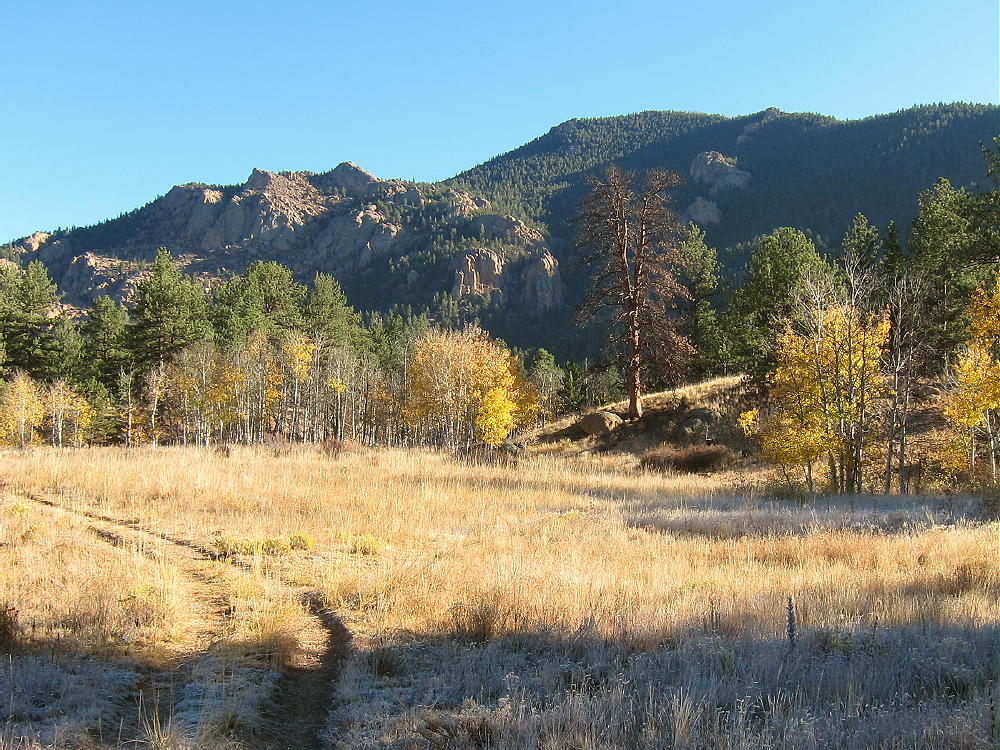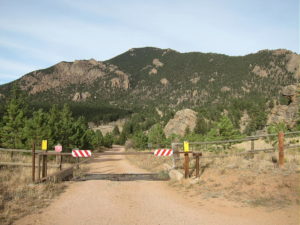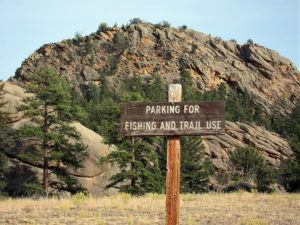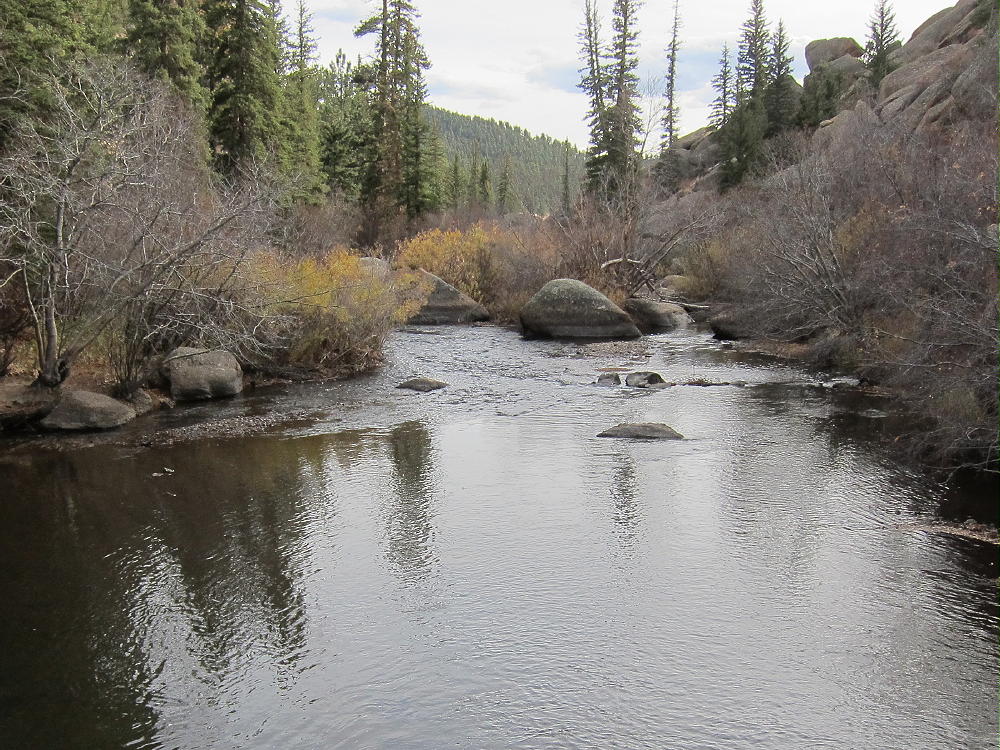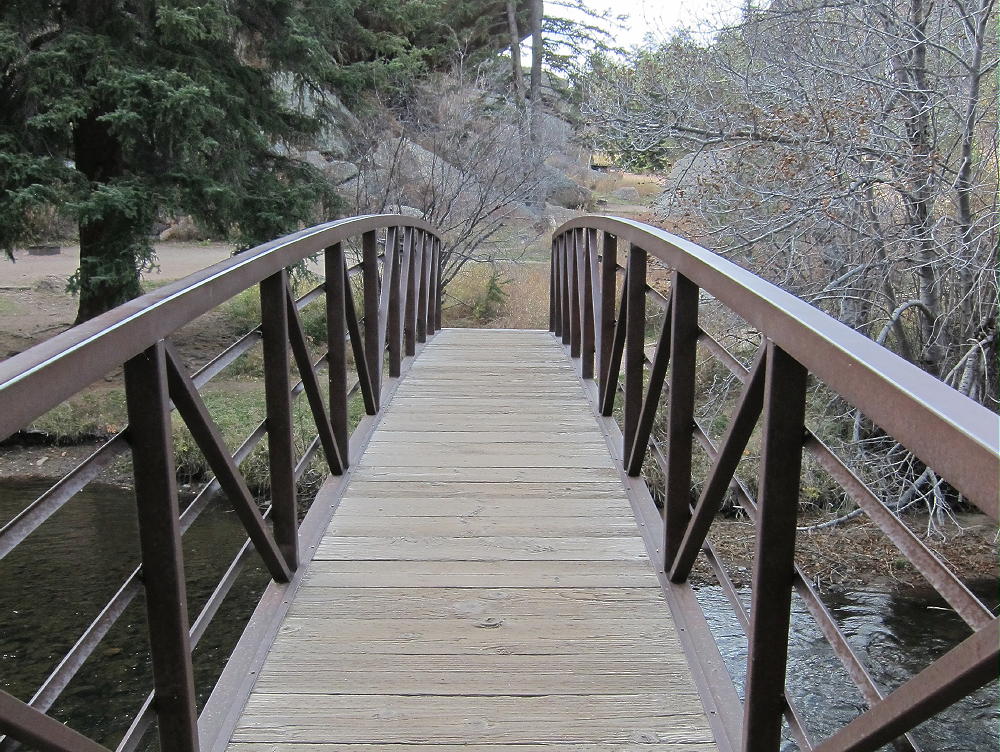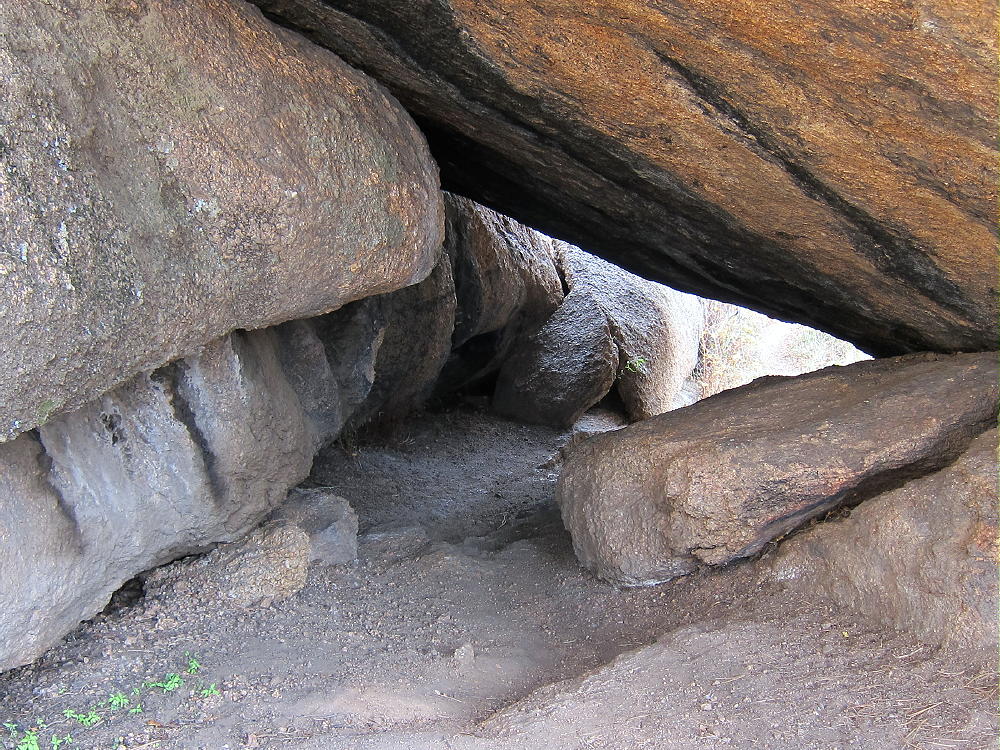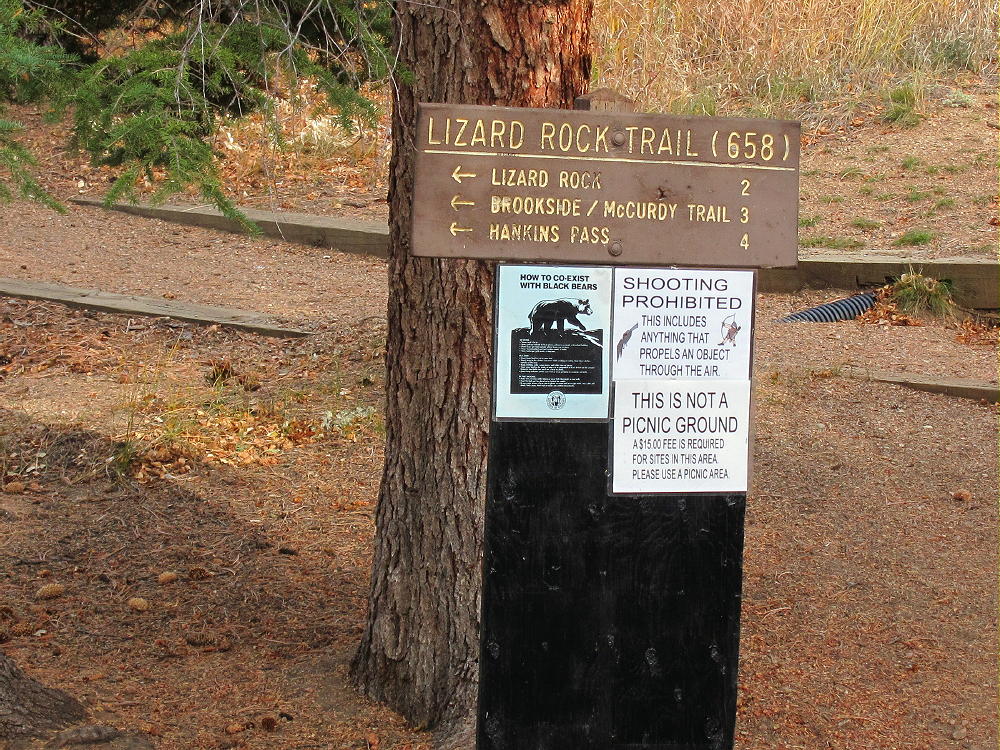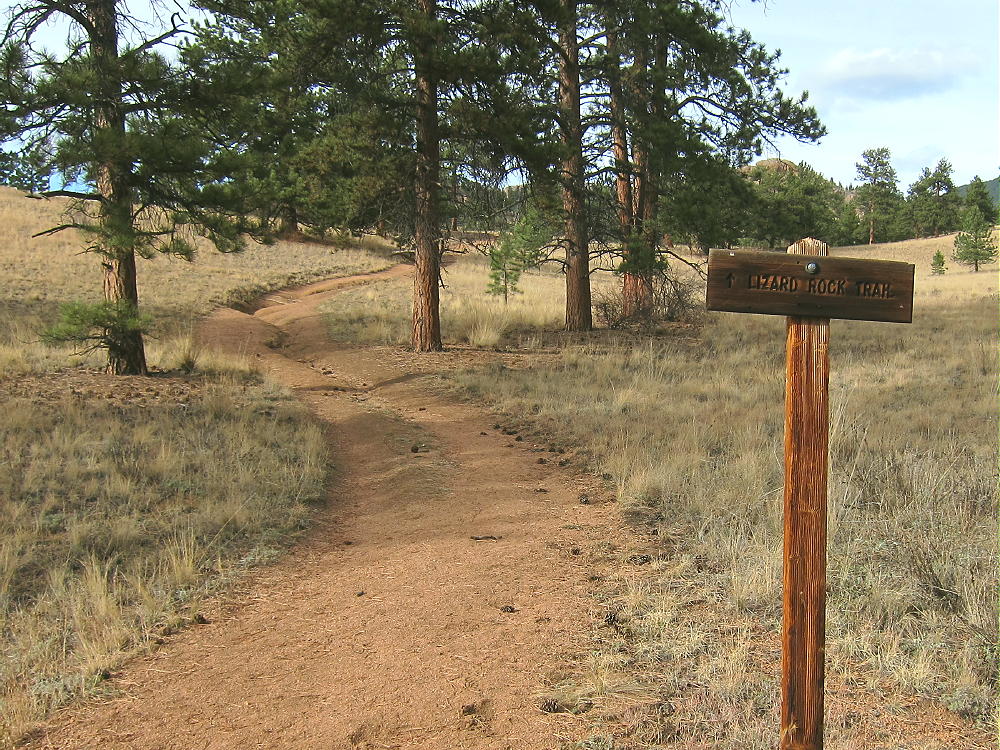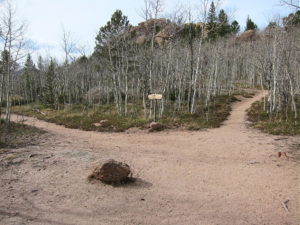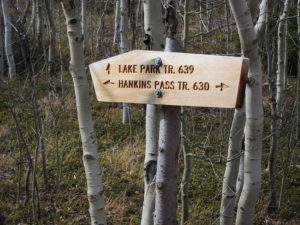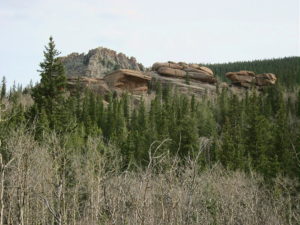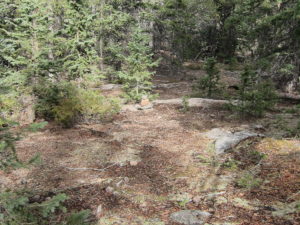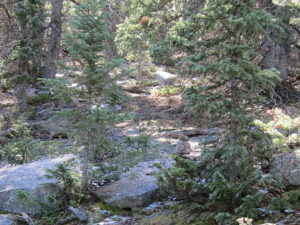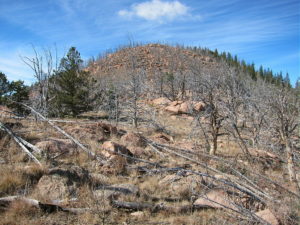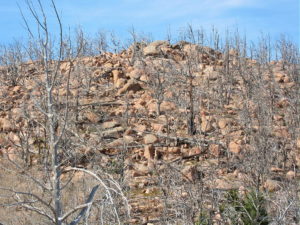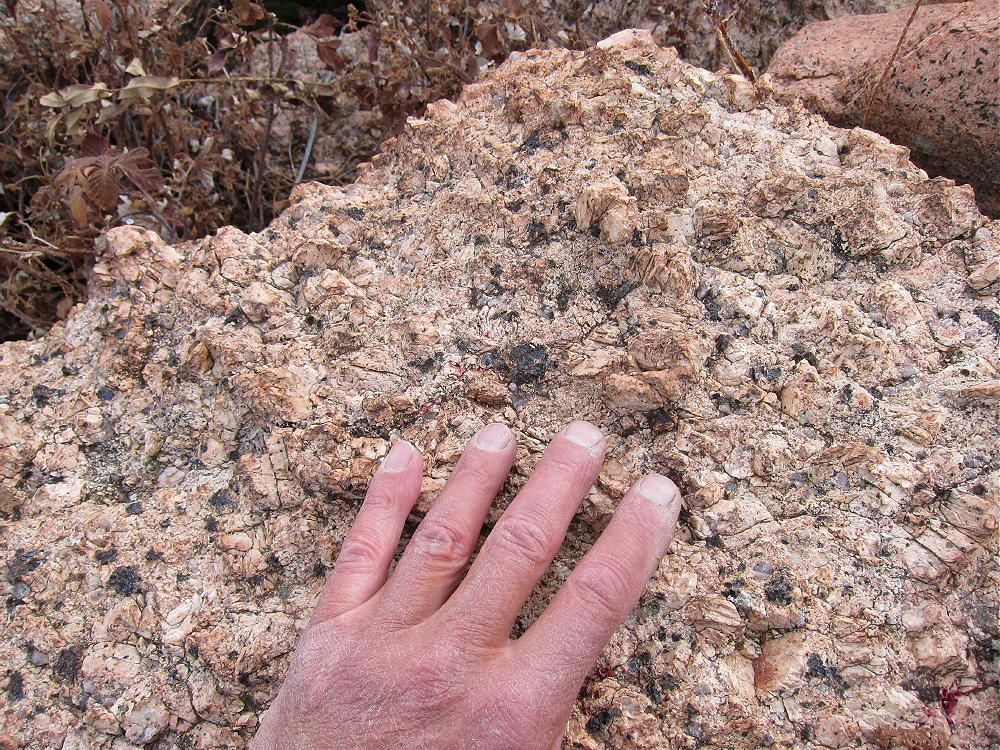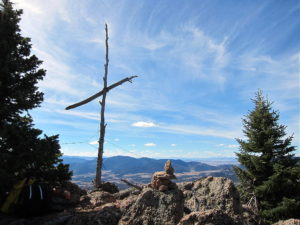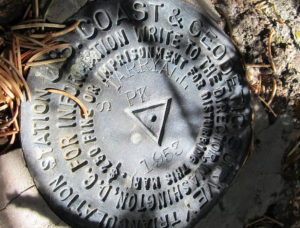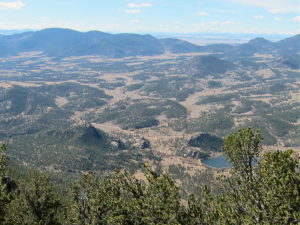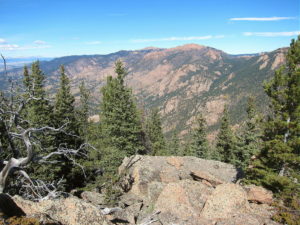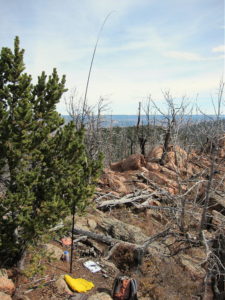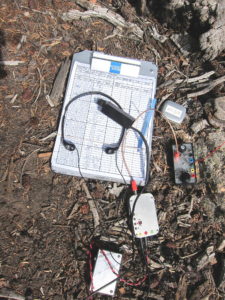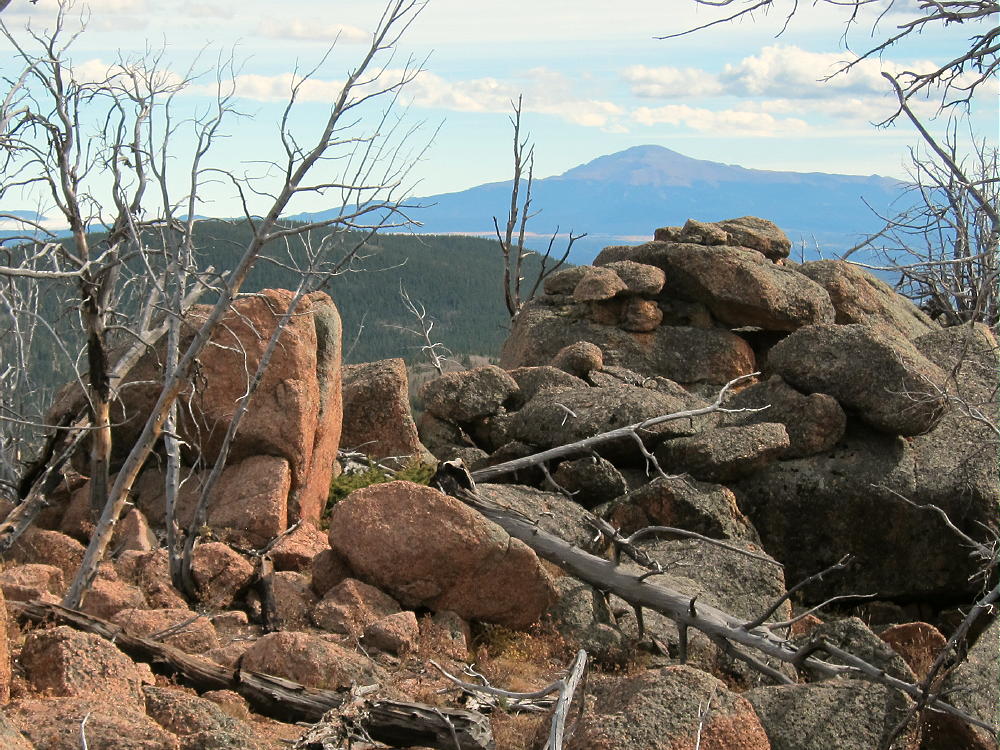W0C/FR-038
South Tarryall Peak
3416 m / 11206 ft
Oct 12, 2016
By KX0R
South Tarryall Peak is a challenging sub-alpine SOTA peak in the Lost Creek Wilderness, east of South Park.
• Pike National Forest
• Lost Creek Wilderness Area
• Good trail most of the way
• Challenging off-trail climb to the summit
• Awesome scenery
• Excellent Radio site
• 10.0 miles round-trip
• 2700 vertical feet
- South Tarryall Peak, West Side
Driving Directions:
• Drive down 285, cross Kenosha Pass, and continue to Jefferson
• Turn south on Highway 77 and drive about 16 miles to Tarryall Reservoir
• Continue south on 77 for about 10.7 miles to the trailhead at Spruce Grove Campground
• This campground is about a mile south of Tarryall Ranch
• Look for a sign for the USFS Spruce Grove Campground on the east side
• Park outside the campground, away from the gate
• There is no charge to park
- South Tarryall Peak and Spruce Grove Trailhead Gate
- South Tarryall Peak Parking – Spruce Grove Trailhead Sign
The Hike and the Climb:
• Google Maps is inadequate for hiking in this area – trails are missing
• The Trails Illustrated/National Geographic maps are fine
• GPS is useful and recommended
• Walk from the trailhead down into the campground
• Head slightly east and down to Tarryall Creek
• Cross the creek on a large footbridge
• Immediately head left, upstream, on Lizard Rock Trail 658
• The route passes through a tunnel under a large boulder
- South Tarryall Peak – Tarryall Creek
- South Tarryall Peak – Tarryall Creek Bridge
- South Tarryall Peak – Trail Under Boulders
- South Tarryall Peak – Trail 658 Sign
• Continue north through open meadows and up a small canyon on Trail 658
- South Tarryall Peak – Lizard Rock Trail
• Where the trail comes to a T-junction, turn right, east, on Hankins Pass Trail 630. Some trail signs were missing or damaged when I was there.
• Follow the trail up more than a mile to Hankins Pass.
- South Tarryall Peak – Hankins Pass
- South Tarryall Peak – Hankins Pass
• At the Pass, turn right, south, and hike off-trail, past a campsite, and up into the forest
• Follow a social trail up toward a large rock formation about 200 yards to the south
- South Tarryall Peak – Rock Formation near Hankins Pass
• Stay on the right (north) side of the rock formation and ascend south
• From the southern end of the rock formation, continue climbing south along a ridge
• The ridge leads south to the saddle east of South Tarryall Peak
• There’s a path with occasional cairns almost all the way up to the high saddle
- South Tarryall Peak – Secret Trail with Cairns up Ridge
- South Tarryall Peak – Secret Trail with Cairns
• At the top of the ridge, break out of the forest and climb up to the wide saddle at 10,960 feet.
• The saddle and the peak have been burned by a fire; numerous dead trees stand or lie on the slopes
• Climb west from the saddle up the rocky ridge to the summit
- South Tarryall Peak – Saddle and South Ridge
- South Tarryall Peak – South Ridge Route
Additional Details:
The trails to Hankins Pass are excellent; this part of the hike is relatively efficient.
The off-trail part of this ascent is easier than it looks on the map, provided you go up to the large rock formation and then follow the ridge route up to the saddle, as described above. The mountain is all Pikes Peak granite, with numerous knobs and bumps.
- South Tarryall Peak – Pikes Peak Granite
An old triangulation station stands on the peak – it’s a large pole with a cross. The USCGS benchmark stands underneath the cross, and the steel guy wires are still holding up the pole. Incredible views spread out in all directions.
- South Tarryall Peak Triangulation Station Cross
- South Tarryall Peak USCGS Benchmark
- South Tarryall Peak – View West through La Salle Pass to Collegiate Peaks
- South Tarryall Peak – View North into Lost Creek Wilderness
South Tarryall Peak is a perfect HF site. Far above development below, the noise level is very low. The prominent summit falls away quickly in all directions. No nearby mountains block HF skip signals, except perhaps a couple of higher peaks to the east. Several good spots are available for setting up a pole and operating radio gear.
- South Tarryall Peak – SOTA Activation
- South Tarryall Peak – SOTA Radio Gear
The peak may be useful for VHF/UHF communication as well. It’s high enough to see areas to the south and across South Park to the Collegiate Peaks.
I had a fun SOTA activation, with 40 CW contacts on 4 HF bands. These included a summit-to-summit (S2S) contact with NS0TA on W6/CN-002 (Lassen Peak), 9A7W Ozren in Croatia, and John ZL1BYZ in New Zealand.
It might be possible to combine South Tarryall Peak with nearby Lake Park Peak W0C/SP-069 for a dual activation. This would be a long, hard day!
Be aware of possible hunters in the fall – wear bright orange.
73
George Carey Fuller
KX0R
- South Tarryall Peak – Summit View of Pikes Peak
![]() !! WARNING !! There are old mountaineers, and
bold mountaineers... there are no old-bold mountaineers.
Hiking and mountain climbing are potentially hazardous activities particularly in Colorado with its extreme elevations. I am not accepting responsibility for any death or injury resulting from activations based on my trip reports. Proper training, experience, and personal capability assessment is required - enjoy!
!! WARNING !! There are old mountaineers, and
bold mountaineers... there are no old-bold mountaineers.
Hiking and mountain climbing are potentially hazardous activities particularly in Colorado with its extreme elevations. I am not accepting responsibility for any death or injury resulting from activations based on my trip reports. Proper training, experience, and personal capability assessment is required - enjoy!











